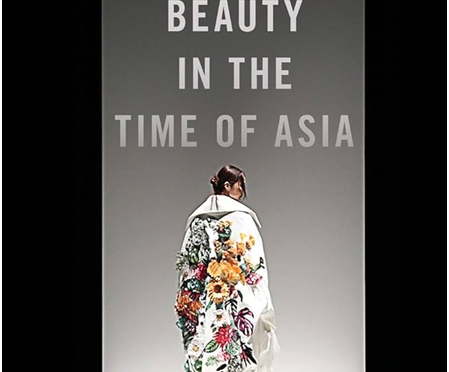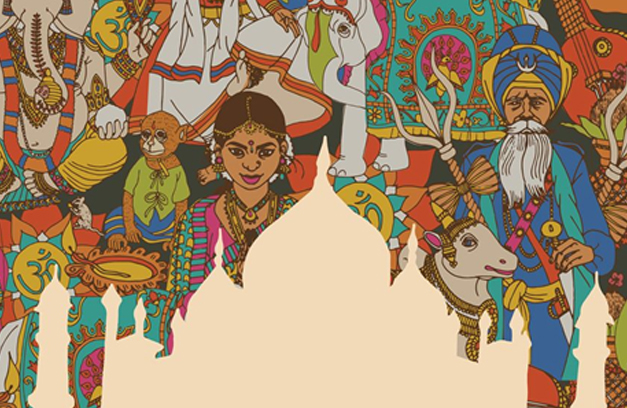FASHION AND BEAUTY IN THE TIME OF ASIA
Posted on : December 7, 2023Author : Ahana Roy

BOOK REVIEW
Book: Fashion and Beauty in the Time of Asia
Editors: S.Heijin Lee, Christina H.Moon, Thuy Nguyen Tu
Publisher: New York University Press
Publication Date: 3 June 2019
Length: 320 pages
The interdisciplinary field of fashion studies has been developed relatively recently, and like the histories of other, better established disciplines suffers from a Eurocentric bias. Fashion and Beauty in the Time of Asia, edited by S.Heijin Lee, Christina H.Moon and Thuy Nguyen Tu is one of the newer works that aims to connect Fashion and the East. The anthology consisting of ten chapters by authors from various fields of research deals with a wide range of complex themes and stories that bring to light the connectedness of fashion and beauty to Asia. Even though the title says ‘Asia’, the book situates itself primarily in East and South East Asia, while briefly touching up on the conditions of garment workers of Bangladesh and undocumented workers from the global south in nail salons of New York.
Some sort of selective amnesia works in Asian Studies, where considerations of fashion and beauty are marginalized despite their contribution in building up economies of nations. The book reflects on the shifting geographies of fashion and beauty and how Asia has successfully deconstructed the idea of fashion as rooted in Western modernity, in the forces of industrialization and democratization. Even though the rise of the relevance of Asia in financial, travel, technology and other sectors has been recognized, its presence in the fashion world is frequently invisibilized. The growing pervasiveness of Korean and Japanese beauty products in the market and the changing beauty standards, following from Hallyu or the Korean wave is only one of the many examples of this fact. As the editors note, the collection tries to understand fashion and beauty as a set of narratives and practices, instead of objects, that design forms of Asian modernity.
Thuy Linh Nguyem Tu points out how skin becomes an arena for Vietnamese women to imagine how modernity should look like and how the self-discipline of Korean women in maintaining a strict skincare and beauty regimen, along with its time investment becomes part of the discourse that connects skincare to geopolitics; where an aspiration towards Korean whiteness is an aspiration towards a position of strength, even in terms of a strong economy or a strong nation. The Korean whiteness or Sáng however is not a colour, but rather a luminous quality of the skin, closer to clean or clear. This commitment to a beauty regimen is explored more in the chapter by Emily Raymundo, where she juxtaposes it with regime, proving that fashion also operates as a system of governance and how the tension between these two comes to spotlight in the lately popular genre of beauty YouTubing. She reconnoitres the unique function that makeup plays within neoliberal markets because of its ability to multiply difference, in the name of individualized ‘choices’ such as cosmetics for different skin tones, textures, or products that target racialized features (without explicitly acknowledging their racial functions) and thereby expand consumer markets. S.Heijin Lee connects this neoliberal ‘colour blindness’ to see how US feminists, mostly liberal, see Korean women’s obsession with cosmetic surgery as a push towards racialized uniformity stemming from a singular national beauty aesthetic and facilitate the generic framing of these ‘other’ women as ignorant and victimized as opposed to white women as modern and aware, having control over their decisions and bodies. She writes about lookism and the use of neoliberal language of self-management to describe body care and makeup products and how motherhood comes under the fold of neoliberal rationale where, in addition to ‘working’ on their own bodies, they feel the imperative to act upon the bodies of their children as extension of themselves. Miliann Kang’s piece uses the concept of transnational body labour to theorize the commercial and embodied service provided by women workers in nail salons of New York to see how the local and intimate is shaped by cross border or global forces that creates poor working conditions. She critiques the tendency by some transnational scholarship to see ethnocentrism as the primary reason for unequal labour practices in immigrant-run manicure parlors and tries to understand the complex inequalities that are at play there. The labour conditions and policies of nail salon workers is also examined by Jessamyn Hatcher, whose target is analyzing the worker’s use of fast fashion, which seems to be stemming partly from their job requirement to wear fashionable clothing to work but partially because of the affective meanings it holds for them as ‘little freedoms’. Their ability to wear stylish clothes to work reinforces a sense of dignity that their poor working conditions rob them of daily. It also catalyzes their desire to distinguish themselves from other similarly situated women. Other chapters deal with the development of what Bourdieu calls a ‘field’ of fashion in 1990s Vietnam and the attempt of a Filipino woman living in Canada to bridge the gaps of socio-economic conditions between the members of the chain that the clothing goes through-the designer, sewer and consumer, by seeking to incorporate ethical business practices and resist exploitation by the global North in her fashion line.
Through the diverse set of essays, the book tackles issues that are innately seen to be tied to fashion and beauty, such as debates around clothing, couture, makeup, cosmetics while also spreading out to understanding the transnational contexts under which labour operates and the relationships of the global north and south in terms of fast fashion production and consumption, outsourcing labour and migrant garment workers, who fit into neither victims nor criminals. It offers neoteric ways of approaching the field and provides new language to deal with questions of ethical fashion and sustainability. It explores relations between clients, producers and workers and unveils larger, systematic ways that control businesses in the fashion and beauty industry. In doing so, it raises important dilemmas about what constitutes sustainability and how privilege should be accounted for. Several chapters in the book also critically analyze articles by mainstream media, laying bare their shortcomings, in terms of having class-based understandings, leaving certain sections of society as ‘unimagined subjects’ and proposing classist solutions for problems that are not viable for these people. The pieces in this anthology are sharp, and the contributors, coming from diverse academic backgrounds, have highlighted a wide range of perspectives, that are important and have been made easy to understand. The collection of essays is solid and truly does justice to the title.
Ahana Roy
Intern, Asia in Global Affairs
The originality of the content and the opinions expressed within the content are solely the author’s and do not reflect the opinions and beliefs of the website.





Leave a Reply